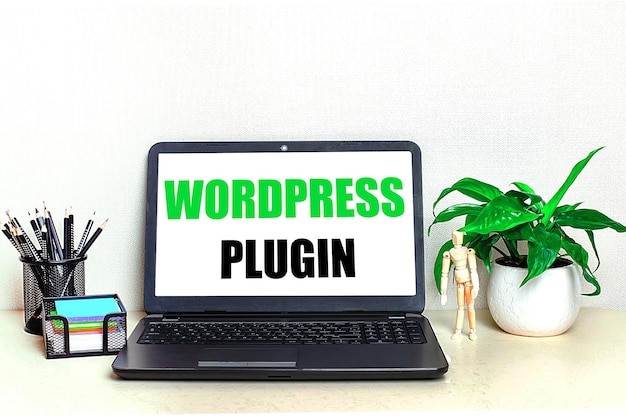Introduction
In the dynamic world of web development, WordPress continues to dominate as one of the most popular content management systems (CMS). Its versatility owes much to its plugin architecture, which allows developers to extend and customize its functionality. As we step into 2023, the process of WordPress custom plugin development has evolved to meet the demands of modern websites. In this article, we will delve into the essential steps for crafting top-notch plugins and explore how WordPress plugin development companies play a vital role in this ecosystem.
Understanding WordPress Custom Plugin Development
1. Conceptualization and Planning
Any successful venture starts with a solid plan. Before you delve into coding, take the time to conceptualize your plugin’s purpose and functionality. Determine whether it will solve a specific problem, enhance existing features, or introduce something entirely new. Define your target audience and outline the scope of the plugin.
2. Setting Up a Local Development Environment
To streamline the development process, create a local WordPress environment using tools like XAMPP or Local by Flywheel. This allows you to test your plugin in a controlled environment before deploying it to a live site. Set up a fresh WordPress installation and start building your plugin within it.
3. Coding Your Plugin
Now comes the coding phase. Create a dedicated folder within the ‘wp-content/plugins’ directory for your plugin. Utilize PHP, HTML, CSS, and JavaScript to implement your plugin’s functionality. Leverage the WordPress Codex and developer resources to understand best practices and coding standards.
4. Implementing WordPress Hooks
Hooks are an integral part of WordPress plugin development. They allow you to interact with the core functionality without modifying the code directly. There are two types of hooks: actions and filters. Actions allow you to execute custom code at specific points, while filters enable you to modify data before it’s displayed. This modular approach ensures compatibility with various themes and plugins.
5. User Interface (UI) Design
An intuitive user interface enhances the user experience and increases the appeal of your plugin. Develop an admin interface that integrates seamlessly into the WordPress dashboard. Utilize WordPress UI components for consistency and familiarity. A well-designed UI simplifies plugin configuration and control.
6. Testing and Debugging
Thoroughly test your plugin to ensure its functionality, compatibility, and security. WordPress offers an array of testing tools, including PHPUnit for unit testing and tools like WP_DEBUG for identifying and addressing errors. Regularly debug your code to eliminate any potential vulnerabilities.
7. Documentation
Comprehensive documentation is often underestimated but is crucial for users and other developers who might want to use or contribute to your plugin. Provide clear installation instructions, explain the plugin’s features, and offer code examples. Proper documentation simplifies the onboarding process for users and facilitates collaboration.
8. Security Considerations
Security should be a top priority during WordPress plugin development. Regularly update your plugin to address vulnerabilities and stay up-to-date with WordPress core updates. Sanitize and validate user input to prevent common security risks, such as SQL injection and cross-site scripting (XSS).
Read Article: The most efficient way to use apps in Dubai to improve your lifestyle
WordPress Plugin Development Companies: Enabling Innovation
In the ever-evolving landscape of WordPress development, plugin development companies play a pivotal role in driving innovation and providing tailored solutions. These companies specialize in creating plugins that address specific needs, from e-commerce enhancements to SEO optimization. Here’s how they contribute:
- Expertise: WordPress plugin development companies consist of skilled professionals with in-depth knowledge of WordPress coding standards and best practices. Their expertise ensures that plugins are well-architected, efficient, and secure.
- Customization: Companies specializing in plugin development can create custom solutions tailored to a client’s unique requirements. This level of customization goes beyond off-the-shelf plugins, providing solutions that align perfectly with specific business needs.
- Quality Assurance: Plugin development companies rigorously test their creations to ensure they work seamlessly within various WordPress environments. This testing includes compatibility checks with different themes, plugins, and WordPress versions.
- Long-term Support: Reputable plugin development companies offer ongoing support and updates. As WordPress evolves, plugins need to stay current to remain functional and secure. These companies ensure that their plugins remain compatible and secure through regular updates.
Latest Trends in WordPress Plugin Development
1. Block-based Plugins
The introduction of the Gutenberg editor has paved the way for block-based plugins. Developers are now focusing on creating custom blocks that offer unique functionality and features. These blocks can be easily integrated into the new WordPress block editor, allowing users to build more complex layouts and interactions.
2. Headless WordPress
Headless WordPress architecture, which involves decoupling the front end from the back end, is gaining traction. Plugins are being developed to enhance the capabilities of headless WordPress setups. This approach offers greater flexibility in creating interactive and dynamic front ends using modern web technologies.
3. AI and Machine Learning Integration
As AI and machine learning technologies advance, plugins are emerging that leverage these capabilities. From content recommendations to chatbots, AI-driven plugins are being developed to enhance user engagement and streamline tasks like content curation and customer support.
4. Performance Optimization
With website speed being a crucial factor in user experience and SEO, performance optimization plugins are in high demand. Developers are creating plugins that automatically optimize images, minify code, and implement caching strategies to ensure websites load quickly and efficiently.
Conclusion
WordPress custom plugin development has evolved into a highly refined process, especially as we venture into 2023. The steps outlined above provide a roadmap for creating powerful and secure plugins that can enhance the functionality of WordPress websites. Additionally, the role of WordPress plugin development companies cannot be understated, as they continue to fuel innovation and provide tailor-made solutions that empower businesses and individuals in the digital realm. By mastering the art of plugin development and leveraging the expertise of these companies, developers can take WordPress websites to new heights of functionality and user experience.

